
Estimated reading time: 8 minutesI am sure we have all experienced this; you try to stay active and exercise, but despite ‘doing everything right’, you still end up sore, injured, or exhausted.
I know because I went through this cycle for many years until I modified and adapted my exercise and movement programmes to suit my hypermobility.
This, and working as a movement therapist for hypermobile clients, ultimately led me to develop the Integral Movement Method (IMM) for hypermobility.
I discovered that hypermobile bodies require a different approach to movement. Traditional approaches were not designed with EDS and HSD in mind.
What works for the general population often doesn’t work for us and can even make our symptoms worse.
Here are the ten common movement challenges I see with hypermobility, plus how we can fix them.
1. Overstretching Tight Muscles
Why: We often feel the need to stretch due to muscle tension. It is important to note that tightness in hypermobility is often the body’s protective response, not true muscle shortening.
We can be tight but stiff, but it is important to remember that we are tight for a reason. These tight muscles are trying to stablise in the absence of the deep stabilizing muscles doing their job.
Stretching harder and further can signal to the fascia to tighten up more, creating a cycle of pain and tension.
Fix: I am a huge fan of gentle dynamic stretching and breathwork to relieve tightness. Calming the nervous system is key to relieving tension.
We could also try some gentle myofascial release techniques to help relieve tightness rather than stretching it out.
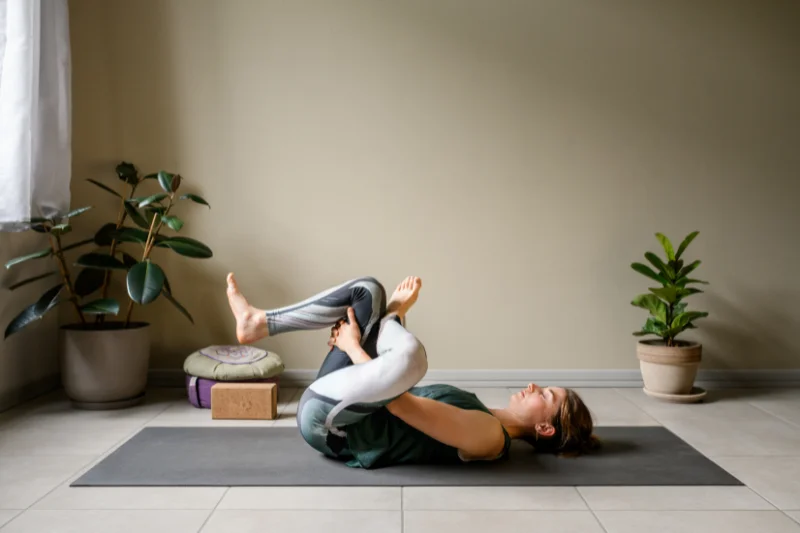
2. Locking Joints for Stability
Why: It is very common to lock out the joints when we are exercising, or even standing. I was so guilty of this!
I call this “false stability” as we are seeking stability by hanging out in end of range positions. Knees and elbows are common areas to lock because it helps us feel stable.
In reality, we are actually quite vulnerable and weak in this position. Over time, this hyperextension can put excessive strain on the ligaments and joints, leading to more pain. A locked joint is not a stable joint.
Fix: It is really important to practice softening our joints and feeling the sensation of a soft joint. This may mean a gentle microbend of the knees when standing still.
Notice how you lift things or bear weight. Are your elbows locked out?
Noticing this and gently changing it can change the pattern. When we lock joints, the muscles can’t work to support the joint, so it is an important repatterning that can be really beneficial.
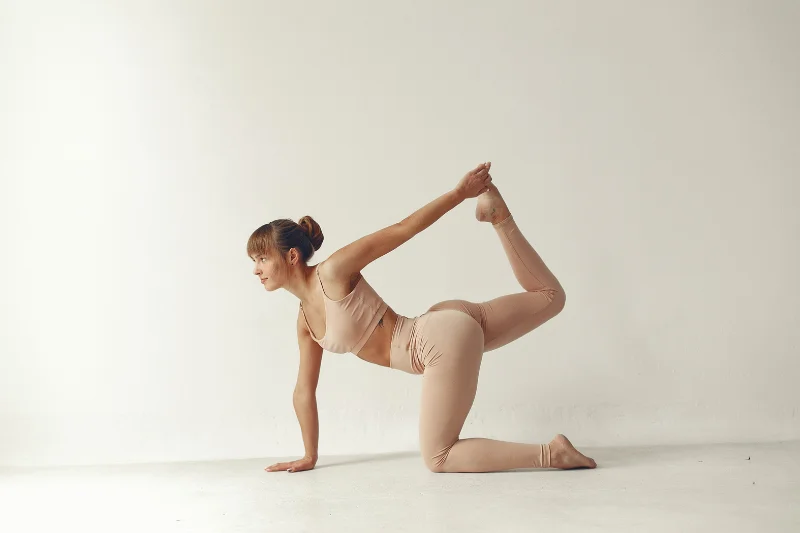
3. Bracing the core constantly
Why: Many people with hypermobility either find it challenging to find a stable centre, or they overbrace and hold tension constantly.
Pilates, in particular, is guilty of encouraging this so-called ‘core engagement’. Over-bracing the core can lead to greater pain around the hips, pelvis, and lower back. It can inhibit healthy breathing patterns and can fatigue the body.
Bracing the core is not functional, and it is not how the body works in reality.
Fix: We want to encourage the engagement of muscles in a natural way that responds to the load we are putting through the body.
The pelvic floor is a dynamic group of muscles that respond to breath and load. Ideally, we want to teach it to respond to the breath accordingly, rather than being held in a constant contraction.
4. Sitting in Extreme Positions
Why: It can feel comfortable to sit in a W shape or slumping into end-of-range positions. I used to love wrapping my legs around each other when sitting in a chair. It made me feel stable.
Many people often adopt these positions as a form of natural compression for blood pooling that occurs with POTS.
The problem is that these positions can put stress on our already lax joints. Over time, these positions could create pain and instability.
Fix: Initially, we need to be mindful of our seated positions.
Notice when you sit cross-legged and try to sit in a more balanced position with both feet on the floor in parallel. The pelvis will be much happier in the long run.
The most important thing is to keep moving regularly. Get up and move around or do seated movements.
If you do find you need to sit in these compressed positions, try and alternate sides and positions regularly to prevent compensation patterns in the fascia.
You can use cushions, supports, and props to help support the spine and neck. You can try wearing compression for POTS and dysautonomia.
5. Pushing through fatigue or pain
Why: I get it, in our society, we have been taught the “no pain, no gain” approach to movement. If you just go a little harder, a little farther, a little longer, you’ll gain more.
However, when you are dealing with hypermobility and energy-limiting conditions, I don’t believe this approach is effective.
I’m a huge advocate of a “No Pain, No Strain” approach to movement. I discourage my clients from pushing through pain or fatigue.
It is tempting to try and push through, but it often leads to flares and injuries. If you are dealing with a condition like ME/CFS, this could also trigger Post Exertional Malaise (PEM).
Pain and fatigue are important signals from the body that it is under too much stress and strain. Learning to listen to the body signals and taking constructive rest days is super important.
Some muscle soreness is to be expected, but this is different from big increases in pain.
Fix: To avoid this, learning to pace is key. This can include being flexible with your movement practice, as we tend to feel different day to day.
You can also try building in planned rest days – these are essential too.
Sustainable progress comes from little and often, and we want to avoid the boom and bust cycle.
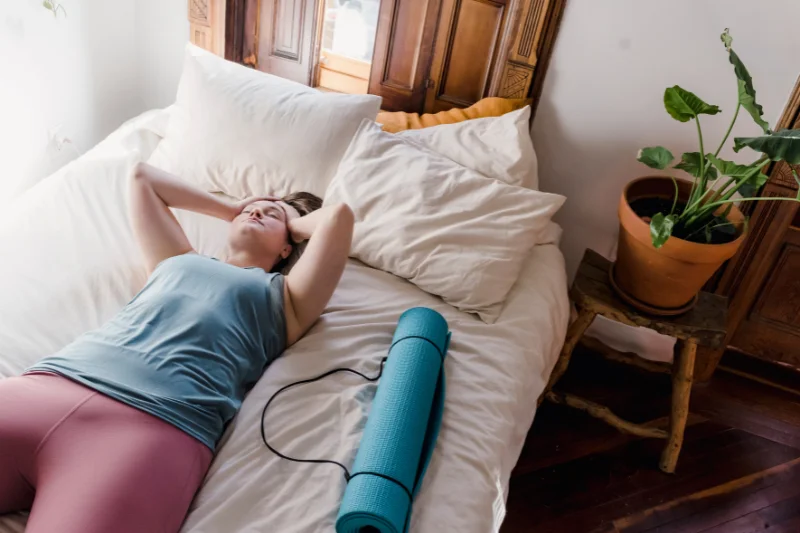
6. Lifting Without Joint Protection
Why: Everyday tasks like lifting and carrying shopping can put stress on our joints if we are not aware of our movement patterns. This is very common for us because hEDS/HSD impacts our proprioception, or our sense of where our joints are in space.
It can be easy to hyperextend elbows, which causes the shoulder to rise up towards the ears, when lifting or carrying.
Without protecting the joint with correct alignment and muscle engagement, we could cause injury and flares.
Fix: To fix this, working on learning alignment and improving proprioception is important.
Try to share the load between both sides of the body and avoid overstretching to reach something.
Supportive braces and splints can help us learn proprioceptively where our bodies should be in space. Our proprioception can also be improved through gentle, controlled exercises.
Remember, the further away from the body the load is, the harder it is going to be to manage. Keep things close and reduce the strain.
7. Over relying on strong muscles
Why: This is such a common issue in hypermobility. When our deep stabilizers are not working effectively, the body can compensate for this by overusing the bigger global muscles (like quads and traps).
This creates imbalances, tension, tightness, and pain. The global muscles fatigue more quickly than the deep stabilisers. And a fatigued muscle will always let you down eventually.
Fix: To fix this, we need to learn how to activate and recruit our deep stabilizing muscles.
In the IMM, I focus on slow, gentle, mindful movements to retrain the muscle recruitment patterns.
We wake up the deep stabilisers and quieten down the global muscles. We start to bring balance to the whole structure, and that ultimately leads to less pain.
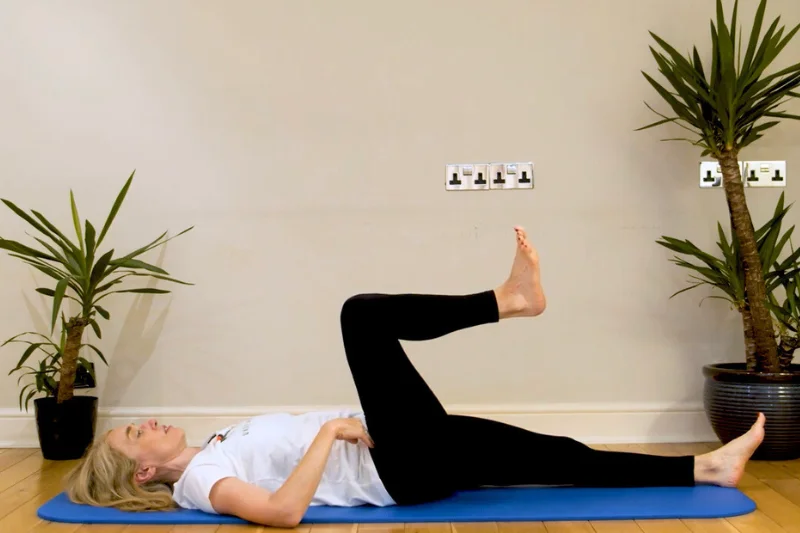
Jeannie demonstrates a move in the Non-Weight Bearing Part 2 Class in the Stability section of The Zebra Club App.
8. Ignoring Fascia Health
Why: Fascia is our connective tissue network that supports and links everything in the body. With a lack of movement, fascia can become tight and dehydrated.
It can feel tight, painful, and we can feel sluggish.
We want our movements to promote healthy fascia and respect the gentle, yet strong nature of the fascia. I love fascia-friendly mindful movements.
Fix: We want to keep the fascia healthy with gentle, varied movements that keep it hydrated. Fascia doesn’t like to be pushed or forced. It responds to gentle pressure and mindful movements.
Fascia also plays a huge role in our proprioception – it is our biggest sensory organ. Working on the fascia can help with proprioception, too.
Members of The Zebra Club report lots of pain relief simply from starting to do this kind of movement before they even begin strengthening.
9. Rushing Into Strength Training
Why: We are often told we need to get stronger if we have hypermobility, because strong muscles will support the lax joints.
This is very true and important, but the way in which strength work in approached is key. Jumping straight in with resistance or loaded work can be quite detrimental for a hypermobile body.
I have found after working with thousands of hypermobile clients that we need preparation in calming the nervous system, awareness of alignment and control, and some degree of stability before we load the system more.
We must feel safe before we build strength.
Fix: I address this in the IMM. We begin with breath and relaxation to calm the nervous system and establish control and body awareness.
Then we layer stability and strength in gradually – there is no rush. We start low and go slow. We want true stability before we add in load.
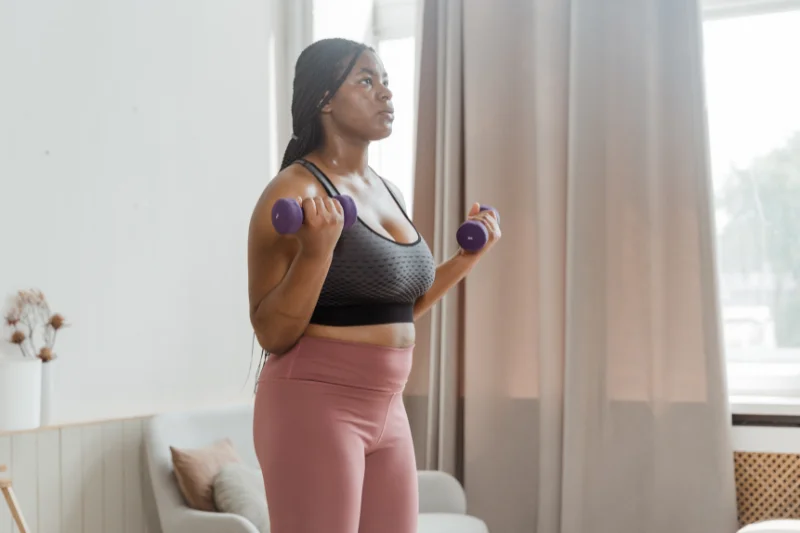
10. Forgetting to Breathe During Movement
Why: There’s a reason breath is the first element of the IMM for hypermobility. Many people with EDS and HSD have breathing pattern disorders of some kind.
Holding breath or shallow breathing during exercise increases tension and stress in the body. Our bodies are already stressed and tense! We want to start to remove that tension before we exercise.
I spent a lot of time researching and exploring the breath and facilitating movement that integrates with the breath to make movement easier and more fluid.
Fix: Spend time observing the breath first, noticing how you breathe without judgment.
Start to gently coordinate the breath with movement, but in a natural way. Breathing well can make movement smoother, safer, and more efficient. I am very intentional about how I teach and cue breathing in all of my movement classes.
Tension can ease away, allowing full expansion of the torso. I did a video on this recently on YouTube about whole body breathing that may help.
Building Safer Movement Habits with Hypermobility
If you live with hypermobility, movement doesn’t have to be a cycle of injury and frustration. Although I totally understand how it can get that way. I have been there, with constant pain and injuries whenever I tried to exercise.
These ten challenges are common. I have experienced many of them myself over the years and seen them in my own clients’ exercise histories.
But they are not your fault – most of us have never been taught how to move in ways that support our hypermobile bodies.
Traditional movement methods and rehab have been applied to EDS bodies, and sadly, this does not always suit us. We did a research study on my modified approach to Pilates and so far have published the qualitative analysis, with the quantitative report coming soon.
My hope is that this research highlights that when movement is modified specifically for EDS and hypermobility, it can work, and that this will inform exercise guidelines going forward (there are currently none available).
Here are the key takeaways I hope you leave with:
- Awareness about our habits is key to change. If I become aware of what I am doing, like locking my elbows or pushing through pain, for example, I can change it.
- We can build safer movement habits that can help reduce pain, prevent injury, and help us gain confidence in our body’s ability to move and support us.
- Over time, if we continue to drip-feed the nervous system little and often, these habits will become second nature, helping us move with ease.
- Movement is medicine – but only when it suits your body. We often try to fit ourselves into a predetermined model of what exercise should be, but with a condition like EDS or HSD, modifications are necessary.
Stability isn’t built overnight – but by taking those small, consistent steps.
If you’d like to explore safe, guided movement designed for hypermobility, join me in The Zebra Club. You’ll find step-by-step classes to support you.
Video: Gentle 20 Minute Flow
If you are scared of movement or have had bad experiences with exercise and hypermobility, this is a great place to start. This 20-minute hypermobility & EDS flow class is perfect for all levels and abilities. No equipment is required.
FAQ
What exercises should be avoided with hypermobility?
People with hypermobility should avoid uncontrolled end-range movements, aggressive stretching, and high-impact exercise without proper preparation. These can increase instability. While there are no “banned activities”, I don’t recommend anything that increases or brings on new pain.
How do I protect my joints if I’m hypermobile?
Protecting joints with hypermobility means keeping a micro-bend (not locking out), moving slowly and with control, and strengthening stabilising muscles. Supports or braces can also help during higher-demand activities.
Why do I get injured so easily with EDS/hypermobility?
EDS and hypermobility can cause fragile connective tissue and increased inflammation, which makes injuries more likely. Building tissue tolerance gradually and respecting your body’s baseline is key to reducing risk.
How can I tell if I’m moving safely with hypermobility?
Safe movement should feel supported, controlled, and free of strain. If you find yourself holding your breath, relying on momentum, or locking joints, the movement likely needs adjusting.
Why do I feel stable only when I lock my joints?
Locking joints creates “false stability” by relying on ligaments instead of muscles. True joint stability comes from retraining muscles to support movement without overloading connective tissue.
Can people with hypermobility build strength safely?
Absolutely, people with hypermobility can safely build strength through slow, low-load, controlled exercises. The key is gradual progression and preparing the body before increasing intensity.


2 Comments
Laura (Laurie) Dumas - 16th September 2025
I think you have a winning concept here. I am an avid serious amateur ballroom dancer and have been on and off since I was 22 (I’m 67 now). I now have not only joint hypermobility syndrome (diagnosed) and presumptive Ehlers Danlos. Plus foot peripheral neuropathy. I am trying very hard to lessen those issues so I can resume ballroom dancing at any level possible. I have been first in chiropratic care for almost 10 years and then after that have had EXTENSIVE craniosaral physical therapy. I have studied Dr. John Upledger’s craniosacral therapy while getting treatment. I already do much of what you show here and strongly support it and am very glad you offer this to so many people. I lived in London, England to learn how to dance for 3 years in the mid 80’s. I found Classical Stretch/Essenctrics on our public broadcast stations (PBS) from former ballet dancer in Canada who has extensively studied the body (fascia and more) and I now use her DVDs and exercises that she suggests for those with neck and back pain (she herself has had many issues with pain so for her own good and others). My husband of 20 years died of pancreatic cancer after almost 3 years of suffering and chemo. I am having to downsize/pare down/pack and move all on my own. I have to do a lot of physical movement/activity I would like to not do and usually don’t and am now in considerable pain. I have no choice. I would love to have the money for your program but I don’t know how I am going to handle the finances I am facing. I will keep your information if that should change. Reach out to Miranda Esmonde-White…you have much in common. I don’t think she has EDS but she knows and understands pain. She has written two books, one on aging and one on pain (I know where the aging book is but right now in the chaos of moving I am still looking for the pain one). I have an apt this afternoon and will be in a position I HAVE to do physical activity I shouldnt be doing but…. I am on a strict deadline that I don’t see how I am going to meet. I just finished my 1 hr. soaking therapeutic 4 jet tub bath, 1 hour of using prescription compounded cream on my feet and menthol type OTC creams on my knees and shoulders and Aspercreme on shoulders and arms. I also have “chronic intractable fialed pain syndrome complicated by a migraine disorder” diagnosis by Johns Hopkkins and I use the Aspercreme for the cervical radiculopathy arm pain. I have oosteoporosis and fell fracturing both wrists and sustaining a R rotator cuff injury. I use the bath to exercise my wrists/hands to gain as much function as possible. Do you have access to AI on your computer? I use mine extensively and gain much insight about everything that I think someone like you could benefit from. Sorry I went on so long…I am also a highly sensitive person and am a INFJ (Myers-Briggs test anyone can access on line and take the test to see where you fall). I sense you probably are on the sensitive side yourself. Have a great life and good luck with this endeavor!
Jeannie Di Bon - 24th September 2025
Thank you for sharing your experience with us. I do have free resources on my YouTube channel too that you may like to view – it is called the Hypermobility Channel.